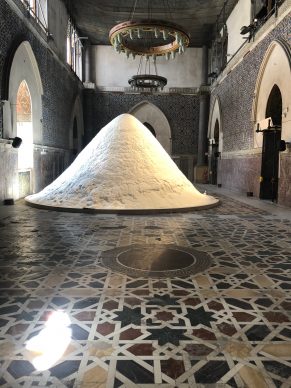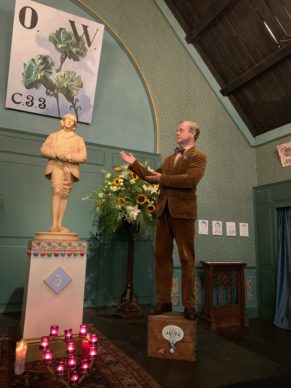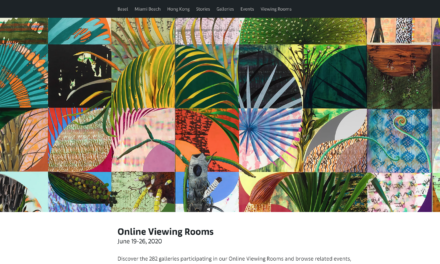Objects of memory
When it comes to ancient African art, the idea of an immaculate object is meaningless. They are works that bear the traces of experience, of ritual, of hands passing over wood, of ointment: They are transformed into objects of memory. They tell a story. The same is true for British fashion collector Hamish Bowles. For him, the history of a dress is tied to the history of the woman who wore it. And he understands them both.
With Anna Wintour
Hamish Bowles was for many years an editor-at-large at American Vogue, working alongside the indomitable Anna Wintour. He has also curated several exhibitions to which he has lent his expertise, including the unforgettable Jacqueline Kennedy: The White House Years, at the Metropolitan Museum of Art in New York in 2001, which explored elegance as an instrument of power.
Colossal collection
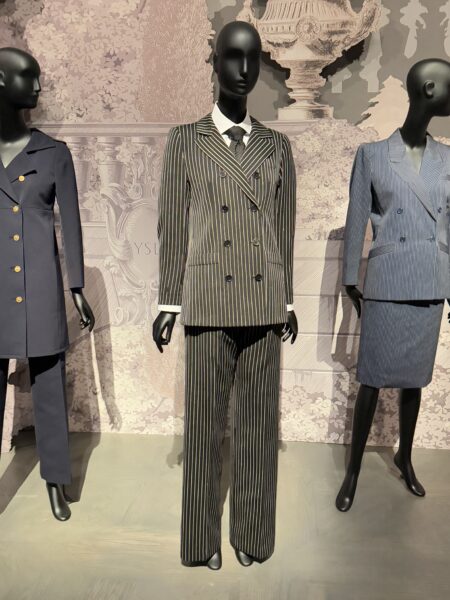
In Marrakech, at the Yves Saint Laurent Museum, he is unveiling for the first time a tiny part of the colossal collection he has amassed since his adolescence. It is said to be one of the most significant private fashion collections in the world, comprising 3,500 pieces.
50 Yves Saint Laurent
Here, he is exhibiting fifty of the 180 Yves Saint Laurent designs he owns. Usually, these garments are carefully conserved in climate-controlled warehouses in New Jersey. Hamish, who now lives back in his native country, only rarely gets to view these treasures he has so patiently gathered.
Legend has it that the Brit possesses a singular gift: that of spotting the hidden gems of fashion history among the most ordinary settings, like in second-hand shops.
Once upon a time
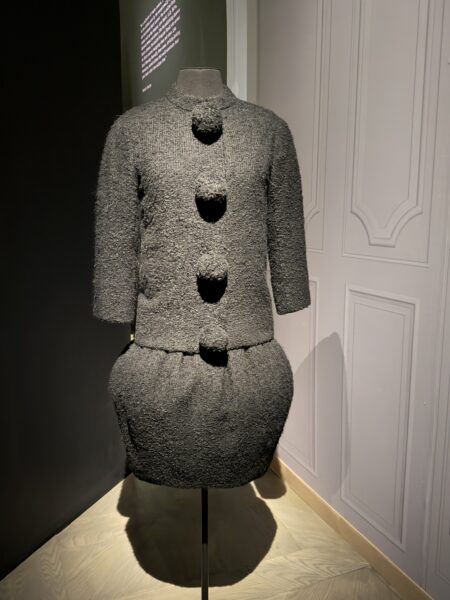
Once upon a time, then, there was a little boy who was fascinated by costumes. While they were living in Hampstead, London, his mother would browse antique and second-hand stores to furnish their home. Hamish would follow, already sharpening his eye.
“When I was between 6 and 7, I went with her with my pocket money, which was literally five pence a week. I bought some things that appealed to me. I got guinea purses, which were sort of 1850-60s purses that women used to carry. And I got some Edwardian dancing shoes.
My mother’s style
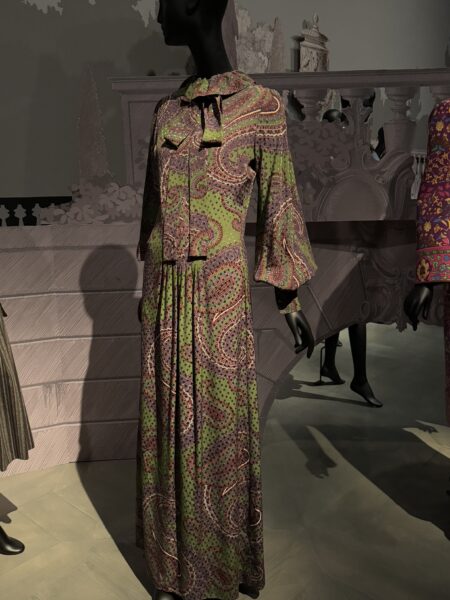
My mother wasn’t elegant but she had a certain style. She was a hippie. Our neighbor in Hampstead was Dr Anne Saunders, the secretary of the Costume Society of Great Britain. And she remembered, when I was five, I went next door to see her, and I said, ‘Which is the correct way to wear a fontange?’ (Ed: a fontange is a multi-tiered hairstyle named after a favorite of Louis XIV.) And she was rather taken aback by this. I was obsessed with things like that.
My first British Vogue
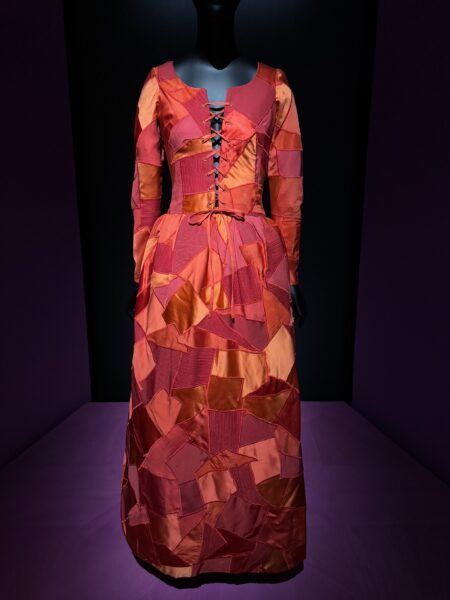
“At ten, I bought my first British Vogue. I remember it perfectly: the letters of VOGUE were in different colors, and on the cover, a couple was kissing. Later, I realized, quite astonishingly, that the couple was Manolo Blahnik and Angelica Huston. That Vogue cover was really important to me. It was then that I thought, I suppose it’s rather important that I collect fashion history. Later, I started attending auctions at Christie’s South Kensington, where was the Lower-end department of the auction house. But at the same time, on Tuesday afternoons, I had French oral lessons. And so my French oral lessons took a real beating because there was a sale of Christie’s every Tuesday week.”
To appreciate is to support.
To support is to donate.
Support JB Reports by becoming a sustaining Patron with a recurring or a spontaneous donation.
My first Saint Laurent

Bowles went on to study fashion history at Central Saint Martins in London. “At the time, I lived in a tiny basement in Fulham. And just next door was a charming charity shop. One Sunday, in the window, I spotted the very first dress displayed here in the exhibition. Incredible! A Saint Laurent dress, right there in front of me. The next morning at 9 a.m., I was in the shop. That was the first Yves Saint Laurent dress that I bought.
Capturing the Zeitgeist
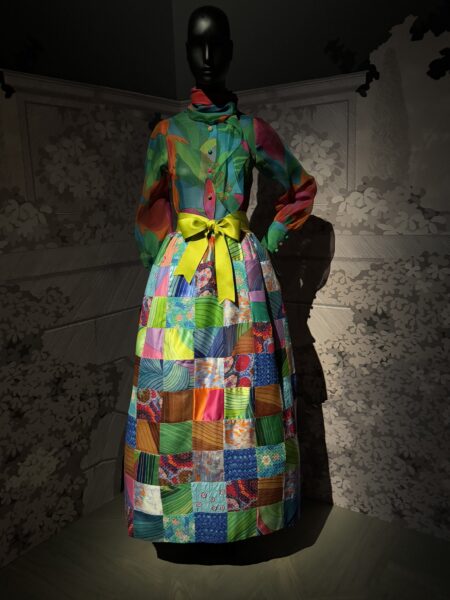
“Saint Laurent is important, first because, in his youth at Dior, he just captured the Zeitgeist. I hope visitors will understand just how simultaneously multifaceted he was. Take 1976, for instance. He designed a Rive Gauche piece—a woman’s workwear jumpsuit in vibrant denim—and that same year, in haute couture, he created something absolutely extraordinary. I’m referring to the Russo-Moroccan collection, an absolute fantasy.”
Lady Jane Abdy and Eunice Johnson
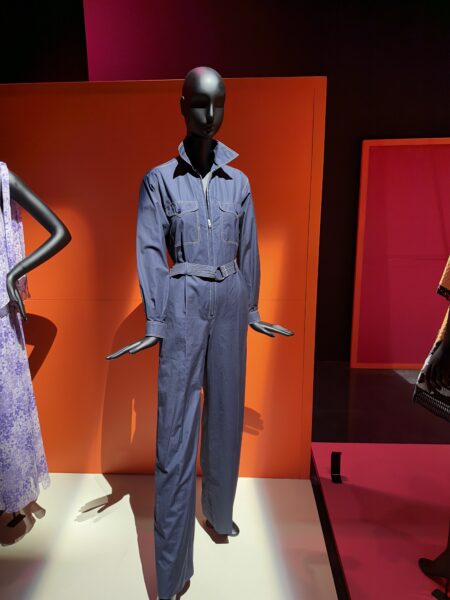
Hamish remembers every previous owner of his dresses. There’s Lady Jane Abdy, or Victoire, Dior’s star model (“she had a 20-inch waist”), Carol Channing, the music hall star (“I adore her”), Eunice Johnson, an incredibly chic Black woman who ran Ebony magazine in Chicago…He also knows precisely how to date each dress and which collection it belonged to.
Incredibly subtle
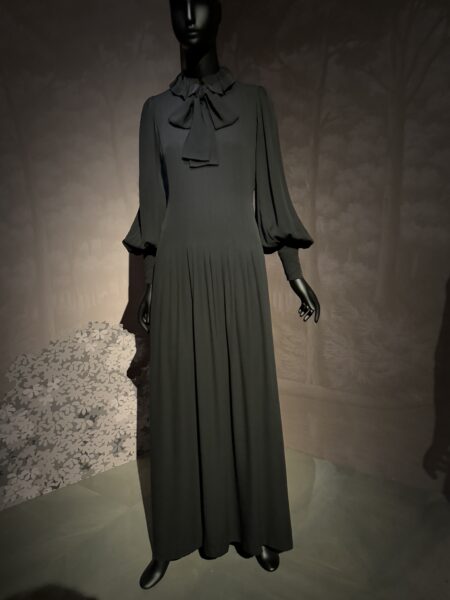
He pauses before an almost monastic black dress. Why this one? “I love these vertical stripes that form the bodice. It seems simple, but it’s incredibly subtle. It’s from 1973—the year I bought my first Vogue.”
We arrive at a patchwork ensemble from 1990: “I bought the skirt at Christie’s in London. The shirt, I found fifteen years later at a vintage fair in New York.”
Belle de jour
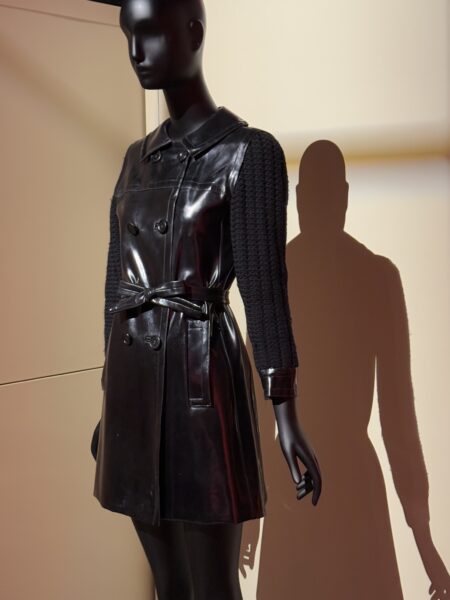
We stop for a moment in front of an outfit worn by Catherine Deneuve in Luis Buñuel’s film, “Belle de Jour”: “That’s Rive Gauche. Yves Saint Laurent captured the Zeitgeist, you see.” We then move to a display case featuring the blond luminosity of a young Deneuve. She’s dressed in a black patent trench coat. Her head is wrapped in a leopard-print scarf, legs crossed in fishnet stockings that subtly reveal her “Belle de Jour” allure.
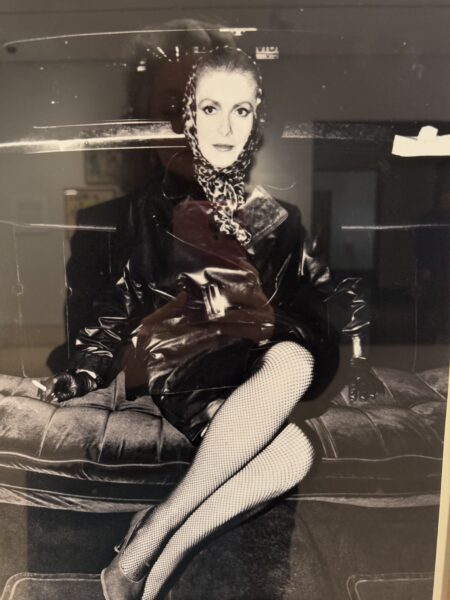
Beatnik fandango or a solemn waltz
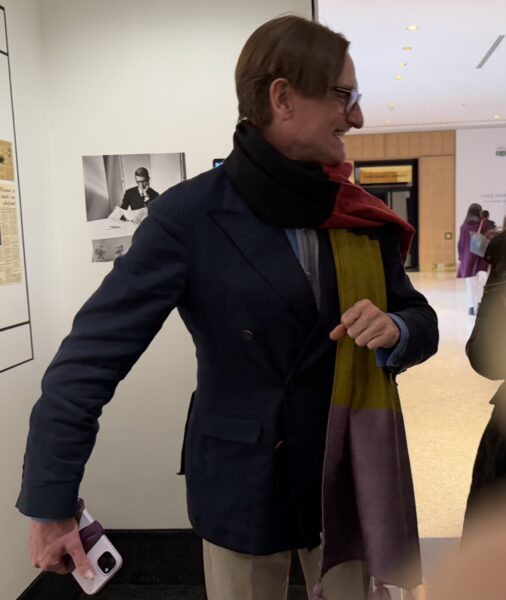
At the entrance of the exhibition, a message from Hamish invites visitors in:
“It is with immense pleasure that I present you, today, with these ensembles, which have long been tucked away in tissue paper, on hangers and in pH-neutral boxes that have kept them hidden from view. The time has come for them to dance before you some beatnik fandango or a solemn waltz. And for Yves to keep the rhythm.”
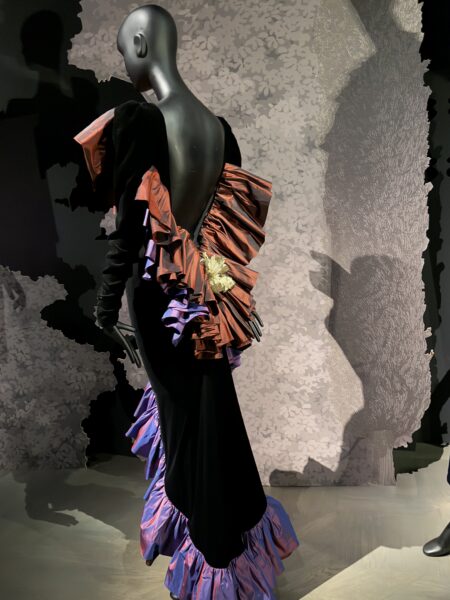
Like collectors of African art, Hamish Bowles believes in the magical charge of the objects of his desire.
Support independent news on art.
Your contribution : Make a monthly commitment to support JB Reports or a one off contribution as and when you feel like it. Choose the option that suits you best.
Need to cancel a recurring donation? Please go here.
The donation is considered to be a subscription for a fee set by the donor and for a duration also set by the donor.


